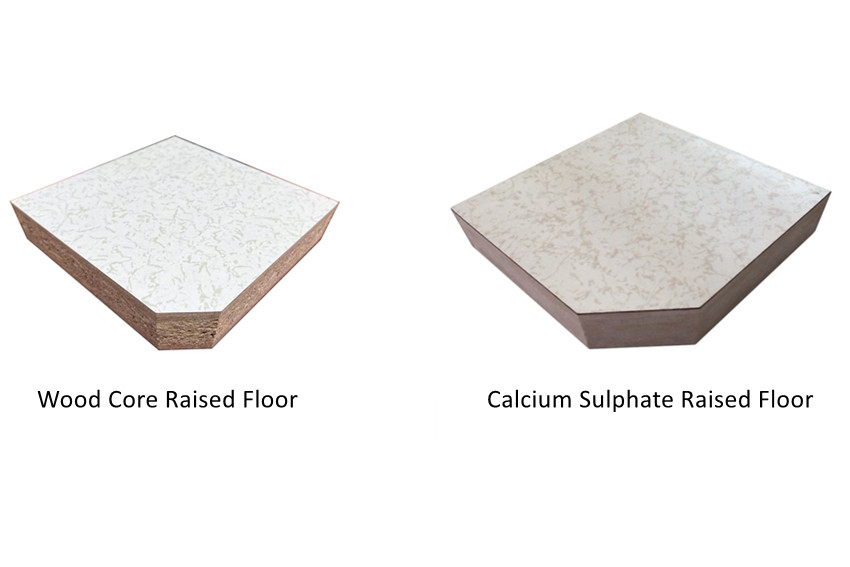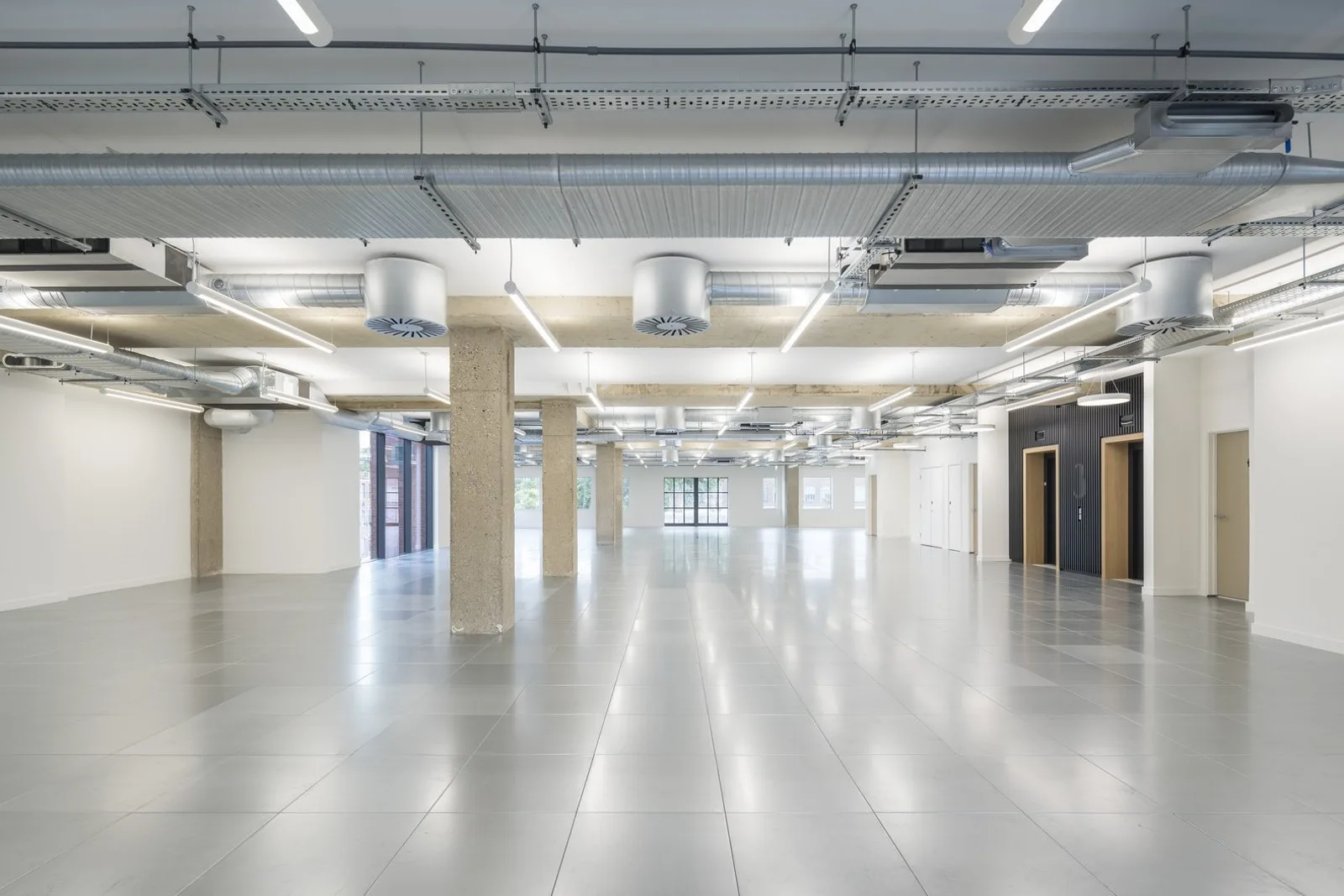
When it comes to anti-static raised floors, we generally think of anti-static all-steel cement raised floors because this is the most widely used raised floor. But there are also two types of raised floors that are gaining popularity, anti-static wood core raised floors, and anti-static calcium sulphate raised floors. These two types of flooring are also prevalent: computer rooms, data centers, control rooms, administrative centers, and office buildings. Next, we will detail the similarities and differences between wood core raised floors and calcium sulphate raised floors.

1. Wood Core Raised Floor VS Calcium Sulphate Raised Floor Structure
The structure of the wood core anti-static raised floor and calcium sulphate raised floor is the same. They are both glued with galvanized steel plate or aluminum foil at the bottom of the substrate, sealed with PVC edge strips around, and choose HPL, PVC, ceramic, or carpet as decoration on the top. Therefore, the two floors are also similar in appearance, but the base material is different. The base material of the wood cored raised floor is high-density chipboard, while the base material of the calcium sulphate raised floor is solidified by calcium sulphate crystals and plant fibers.
2. Wood Core Raised Floor VS Calcium Sulphate Raised Floor Load Capacity
Calcium sulphate raised floor has the high loading capacity among all raised floors. The concentrated load of the commonly used anti-static wood core raised floor is 1250lb, while the concentrated load of the calcium sulphate raised floor is at least 1250lb, and the highest can reach 2500lb. Therefore, we usually choose calcium sulphate raised floor for places with high load-bearing requirements.
3. Weight
A 600*600mm calcium sulphate anti-static floor weighs at least 18kg, but a 600*600mm wood core anti-static floor weighs only about 10kg. For raised floors using the same substrate thickness of 38mm, their weight difference is as much as 13kg.

4. Advantages and Disadvantages
The common advantages of wood core raised floor and calcium sulphate raised floor are low recycling cost and high recyclable rate, which meet the current market requirements for environmental protection. However, due to the different substrates, they have obvious advantages and disadvantages. The advantage of an anti-static wood core floor is its light weight and good sound insulation effect, but the drawback is that it is easy to change due to moisture. The advantage of calcium sulphate anti-static floor is that it has a permanently flat structure and does not change shape when soaked in water. And the calcium sulphate board functions as fire prevention and heat insulation. If a fire occurs, the anti-static calcium sulphate floor can insulate to slow down the flame.




